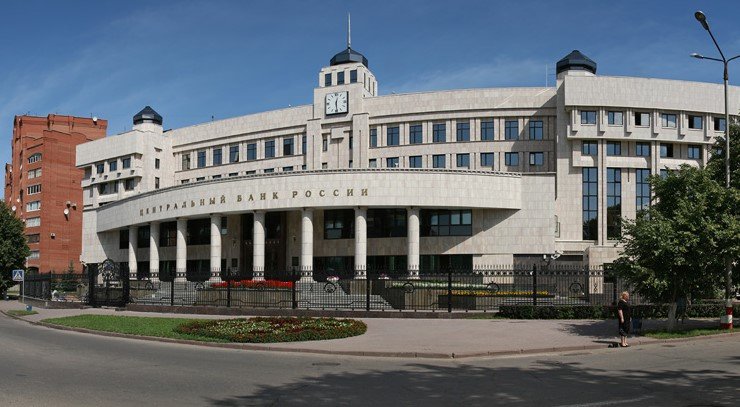The fallout from Russia’s recent lending spree is hitting hard. Banks are coughing up billions to plug holes left by mounting bad debt, as economic strain tightens its grip.
Russian banks are under growing pressure — bleeding profits, tightening credit, and scrambling to contain an alarming rise in non-performing loans. The hangover from the country’s consumer lending boom has arrived, and it’s more painful than expected.
According to new figures released by Ukraine’s Center for Countering Disinformation (CCD), based on Russian Central Bank data, the first quarter of 2025 saw financial institutions fork out roughly $2.7 billion — a staggering $25 million per day — to shield themselves from bad loans. The retail lending sector is bearing the brunt, with default risks rising sharply.
A sharp uptick in defaults and tighter wallets
The first red flag? The retail loan default rate jumped to 3.6% in Q1 — far above the “normal” threshold of 2%. That’s a 1.6 percentage point leap that’s got analysts jittery.
The bulk of these risky loans stem from a credit surge in 2023 and early 2024. Consumers, flush with easy credit and perhaps a false sense of economic stability, borrowed big. Now, many are struggling to pay it back.

Banks have responded with a defensive stance: piling up reserves. In just three months, they parked away 215 billion rubles in provisions. That’s an attempt to soften the blow from a tide of delinquent loans — but it’s coming at a steep cost.
The sector’s profitability is taking a hit, and it’s not just a minor dent.
Profits plunge as bad loans bite
Compared to the same period last year, bank profits tumbled by nearly 33%, landing at just 0.7 trillion rubles (around $8.75 billion). That drop is no coincidence — it’s a direct result of higher provisioning, slowing loan demand, and a shift in consumer behavior.
Two major drags stand out:
-
Soaring reserve requirements are eating into earnings.
-
A dip in new loan issuance, especially consumer loans, which shrank 1.4% in Q1.
Banks make money by lending. When fewer people borrow — and when more fail to repay — the engine sputters.
Interest rates creep up, pushing savers and borrowers apart
Another headache: rising funding costs.
To attract deposits, many banks are being forced to hike interest rates — a move that might help boost liquidity but puts further pressure on margins. It’s a tightrope walk. Raise rates too high, and profitability suffers. Keep them too low, and funds dry up.
It’s a tough choice — and no choice at all.
Here’s a quick look at the numbers from Q1 2025:
| Category | Q1 2025 Value | Change YoY |
|---|---|---|
| Bad Loan Provisioning | $2.7 billion | +40% |
| Retail Loan Default Rate | 3.6% | +1.6 percentage points |
| Consumer Loans Issued | -1.4% | Negative growth |
| Total Bank Profits | $8.75 billion (0.7 trln ₽) | -33% |
Cracks in the consumer confidence wall
At the heart of the issue is the Russian consumer.
Many borrowed beyond their means during the 2023–24 credit frenzy. Whether it was optimism, desperation, or sheer necessity, repayments are now slipping. With inflation gnawing at wages and sanctions restricting growth, household budgets are stretched thin.
Short paragraph here — it’s getting real.
Even small economic tremors are now tipping borrowers into default territory.
CCD’s data adds a layer of intrigue — and scrutiny
While the core figures originate from the Central Bank of Russia, the CCD’s framing of the data has political undertones. It’s not just a neutral economic snapshot — it’s being presented as evidence of structural weakness in Russia’s economy.
Still, numbers don’t lie. And the numbers are bleak.
That said, Russia’s financial system has shown resilience before. But this time, things look different. The mix of global isolation, internal policy constraints, and consumer strain makes recovery a steeper hill to climb.
What’s next for Russia’s banks?
Industry experts suggest that more banks could limit new lending in upcoming quarters. Others may consolidate or look to state assistance.
There’s also growing talk about regulatory easing — potentially lowering reserve requirements to give banks breathing room. But that could backfire if defaults spike further.
And don’t forget the geopolitical backdrop. War, sanctions, oil price volatility — they all play a role.
A few key points to watch over the next 6 months:
-
Will default rates continue climbing, or plateau?
-
How far can banks raise deposit rates before depositors balk?
-
Can the government support consumer income enough to prevent further erosion?
One-liner reality check
The Russian banking sector’s current woes are less of a surprise and more of a delayed bill — and now it’s come due.








